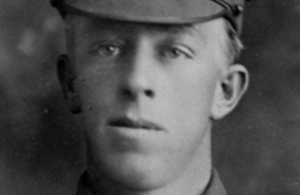WW1 Australian VC recipient George Julian Howell
The story of Australian First World War Victoria Cross recipient George Julian Howell.

George Julian Howell [Credit: Australian War Memorial H19432]
66 men from Australia received the Victoria Cross, Britain’s highest award for gallantry, during the First World War. As part of the Centenary Commemorations the people of the United Kingdom marked their gratitude to those courageous men by presenting a bronze memorial plaque to their home country engraved with their names. The plaque is now displayed at the Australian War Memorial. This archive tells their stories.
Name: George Julian Howell
DOB: 19 November 1893
Place of Birth: Sydney, Australia
Date of Action: 6 May 1917
Place of Action: Bullecourt, France
Rank: Corporal
Regiment: 1st Battalion, Australian Imperial Force
George Howell nicknamed Snowy was born in 1893 in Sydney, Australia. He worked as a builder before enlisting as a private in the 1st Battalion of the Australian Imperial Force. Howell served at Gallipoli, before being transferred to the Western Front, where he took part in the Battle of the Somme and was wounded at Pozières. He was promoted to corporal in February 1917 and was awarded the Military Medal in April 1917.
Corporal Howell was awarded his Victoria Cross for most conspicuous bravery, on 6 May 1917 during the Second Battle of Bullecourt in France. His citation states:
Seeing a party of the enemy were likely to outflank his Battalion, Cpl. Howell, on his own initiative, single-handed and exposed to heavy bomb and rifle fire, climbed on to the top of the parapet and proceeded to bomb the enemy, pressing them back along the trench. Having exhausted his stock of bombs, he continued to attack the enemy with his bayonet. He was then severely wounded. The prompt action and gallant conduct of this N C.O. in the face of superior numbers was witnessed by the whole Battalion and greatly inspired them in the subsequent successful counter attack.
Howell was so badly injured in the attack that he was sent to England for medical treatment. There, he was presented with his Victoria Cross by King George V, before going back to Australia and being discharged on medical grounds. After the war, he worked in newspaper advertising and later served in the Second World War.